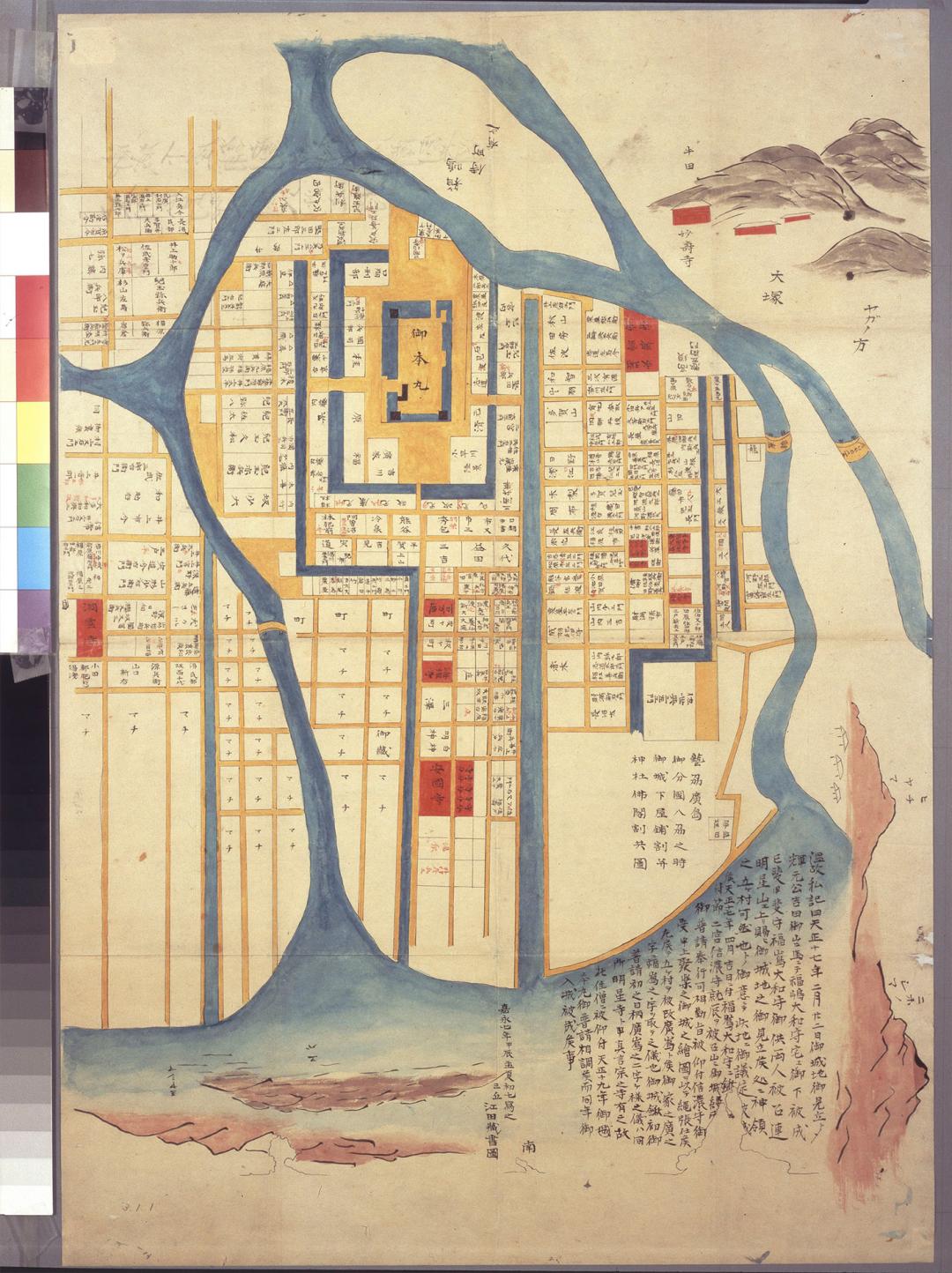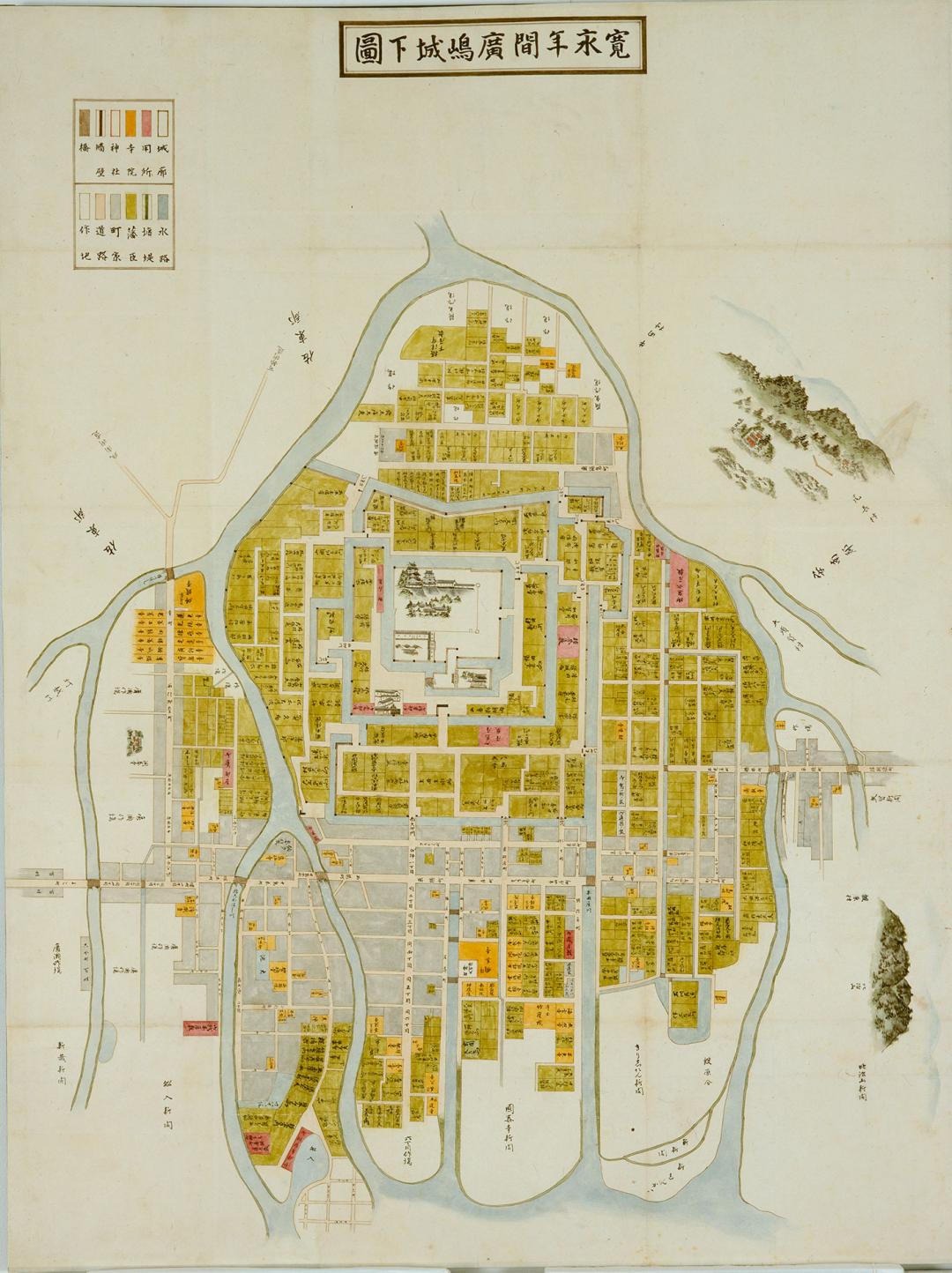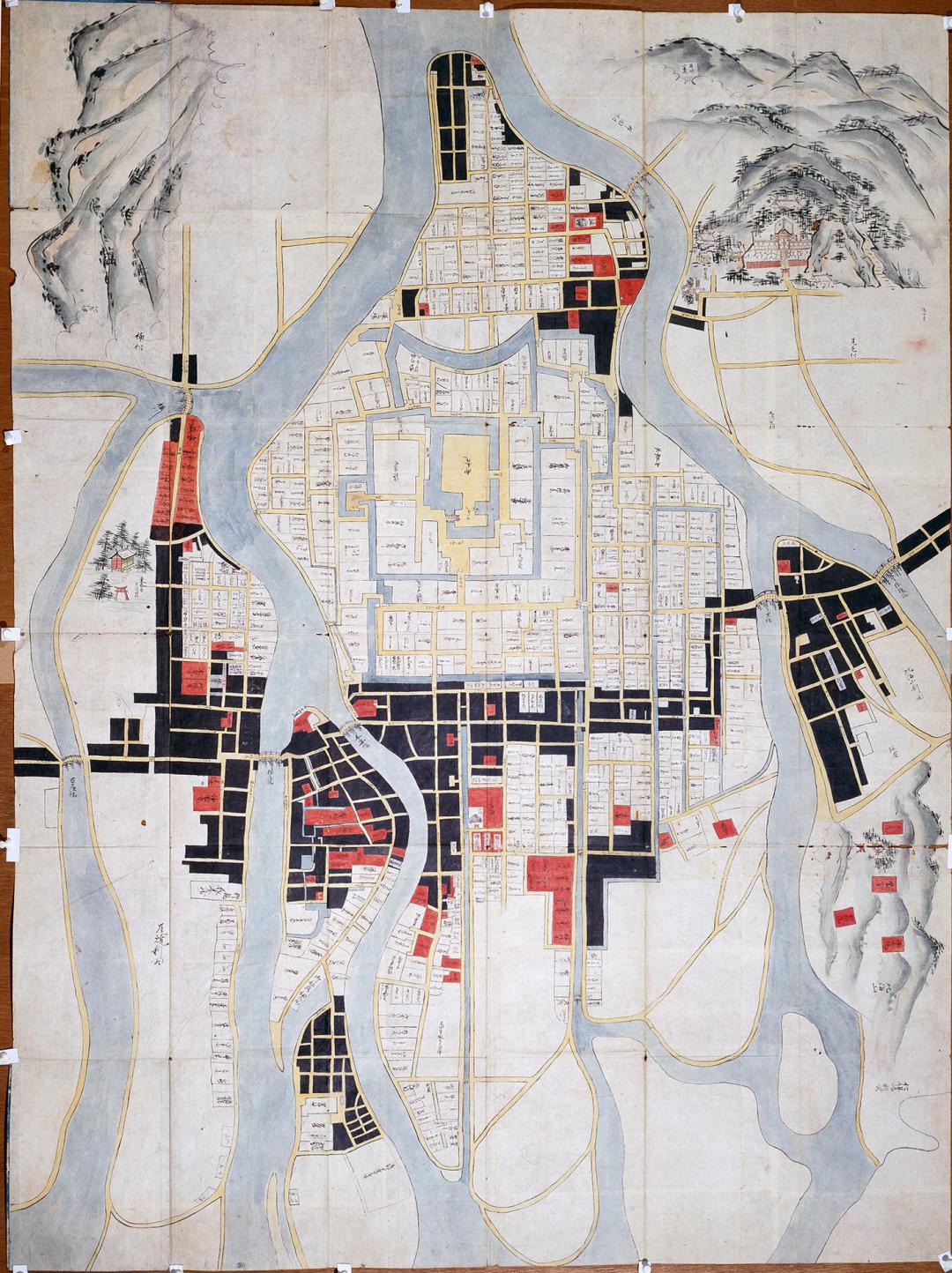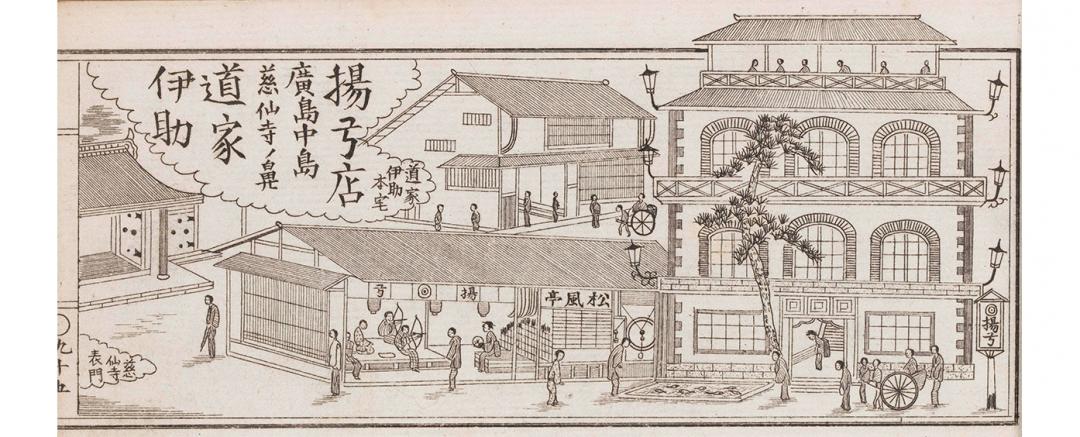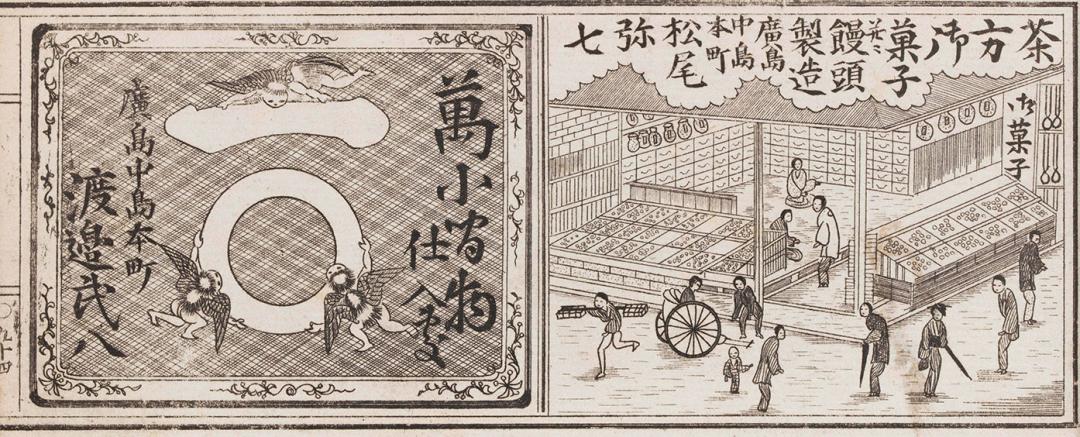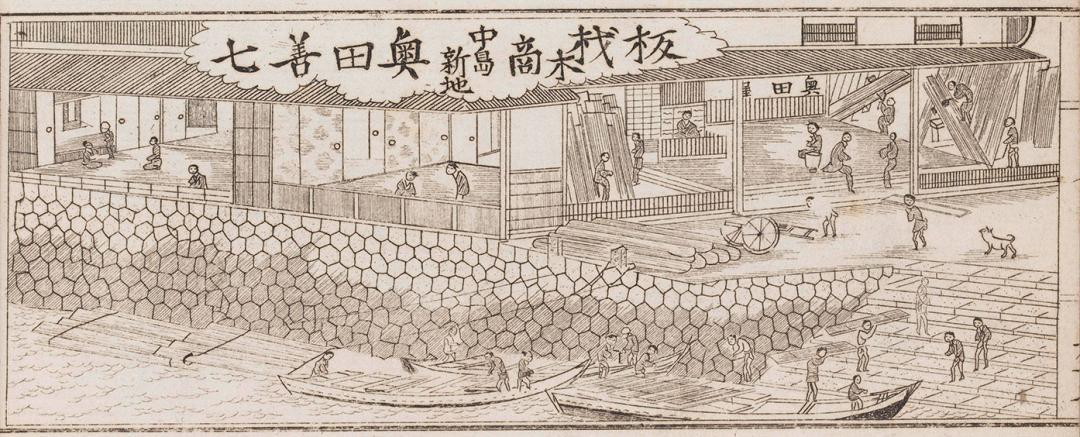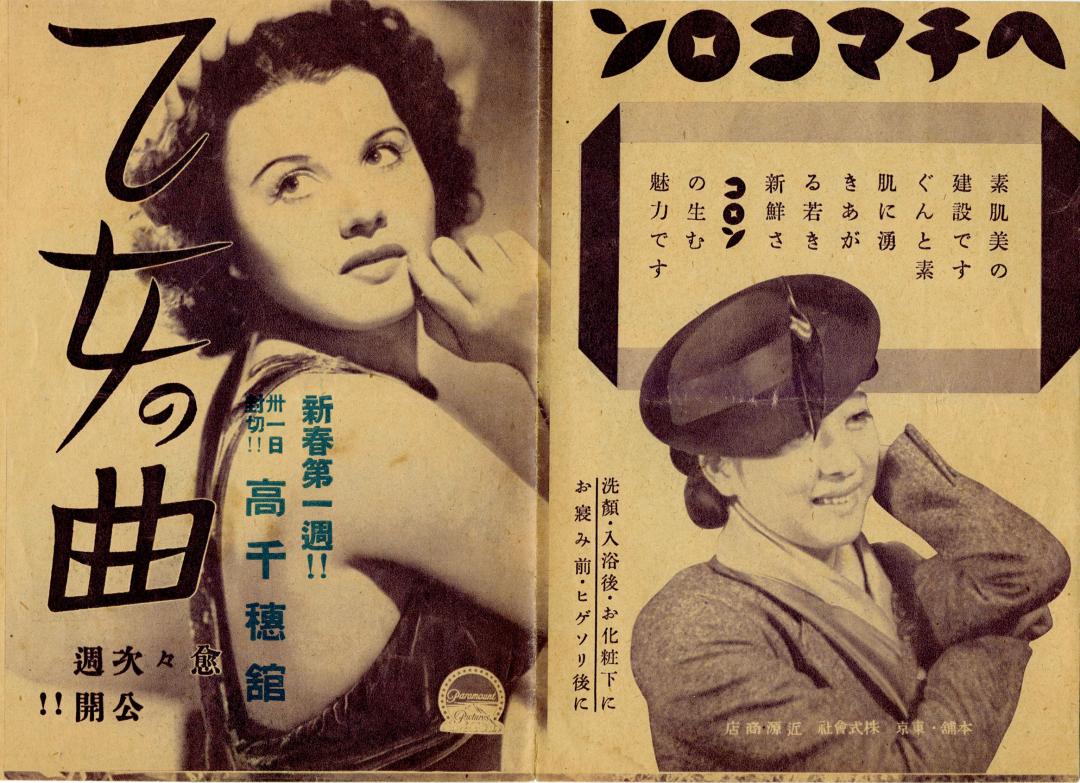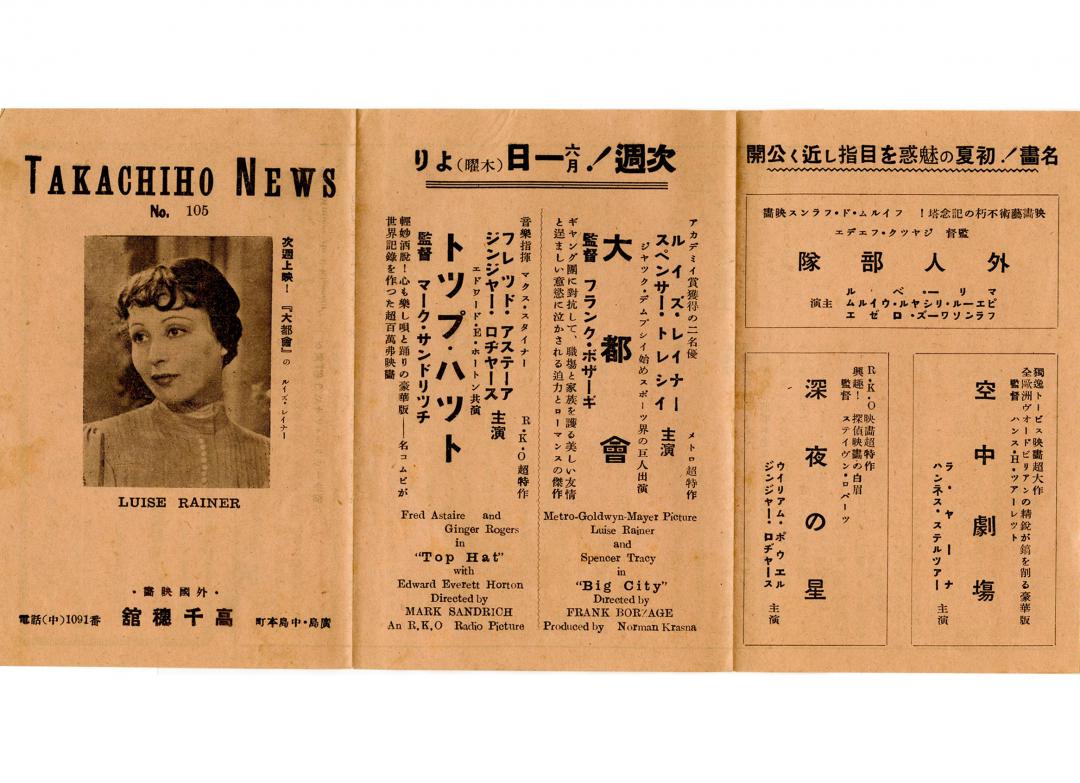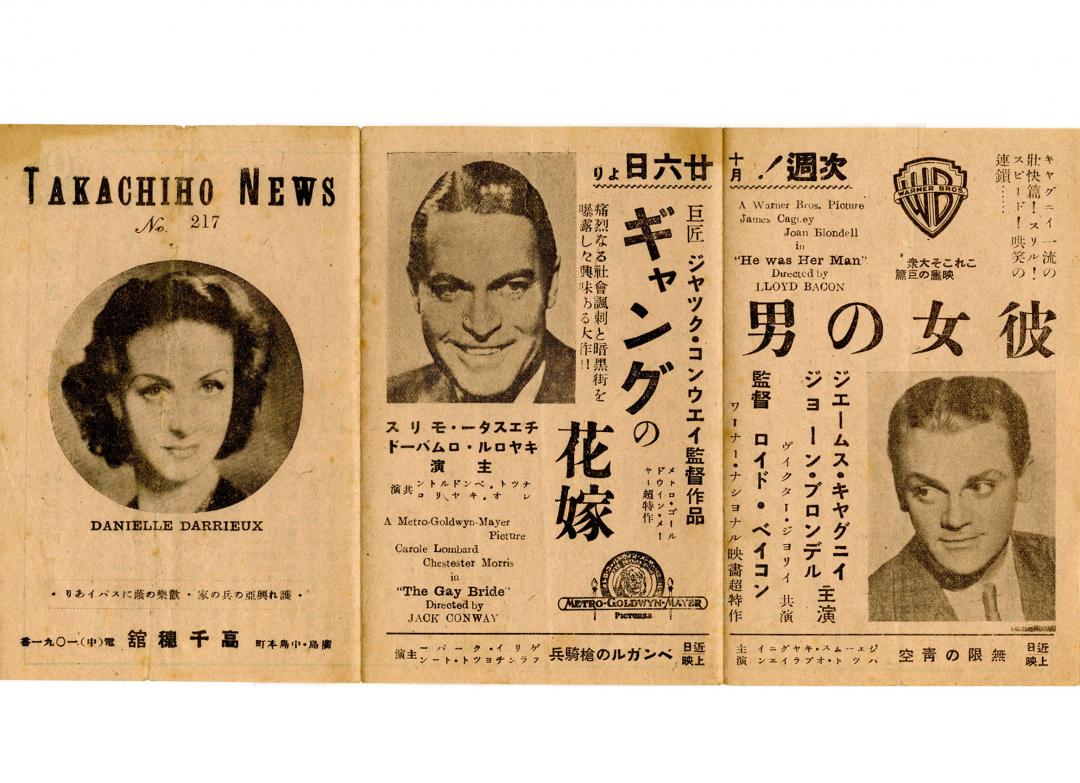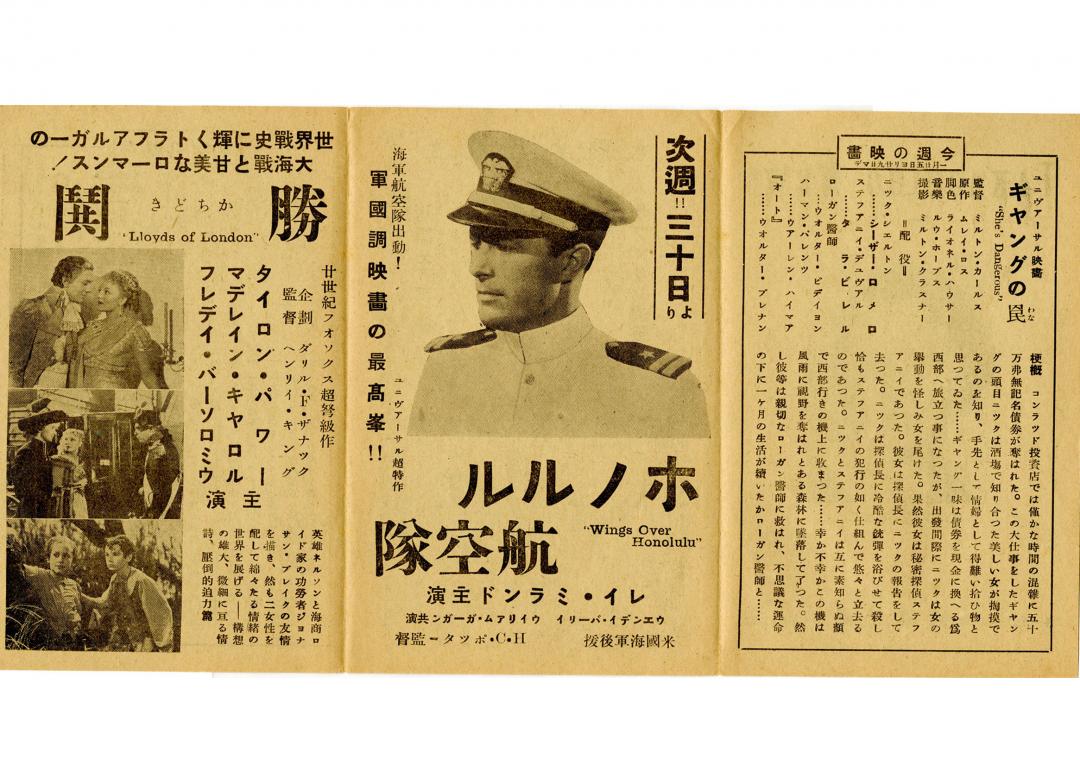❷ The History of the Nakajima District
The Largest Castle Town in Hiroshima, Born on the Shores of the Ota-gawa River Delta
The center of Hiroshima City, located in the downstream basin area of the Ota-gawa River, began to take shape during the construction of Hiroshima Castle by Terumoto Mori in 1589. From the Edo Period onwards, the area became a castle town with the development of a merchant town, as well as land reclamation, and the development of fishing ports. Of the central castle town area, the Nakajima district was by far the most prosperous.
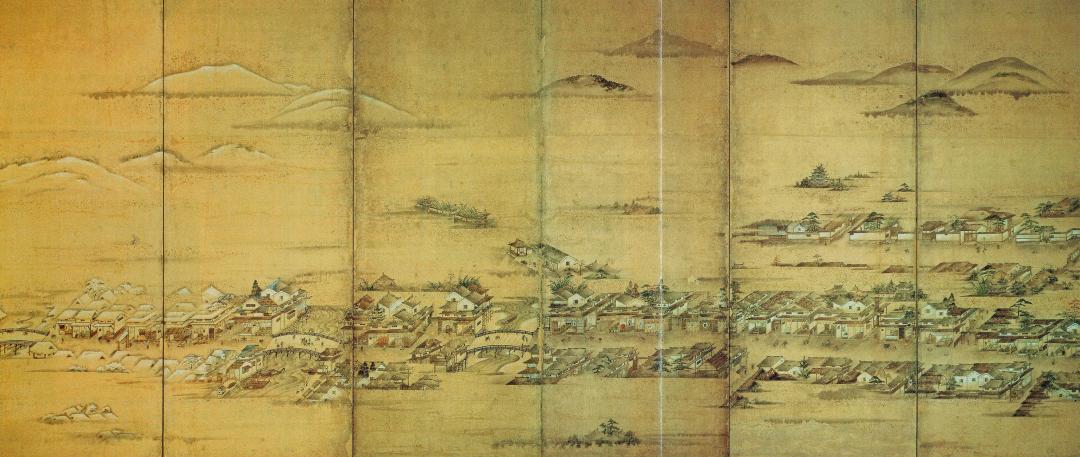
Folding screen depicting the castle town in Hiroshima
Courtesy of Hiroshima Castle
Castle Town Development and the Rise of the Nakajima District
Land for the castle town was expanded out towards the sea using land reclamation techniques, and it would develop into the busiest castle town west of Osaka.
The Rise of the Nakajima District
The Nakajima district is surrounded by rivers to the east, west, and north, and thrived as an important hub for land and sea traffic: it served as a port of origin for moving goods and cargo by boat, as well as a port of trade, and primary location for land traffic with the Saigoku Kaidō going through the north of the district from east to west.
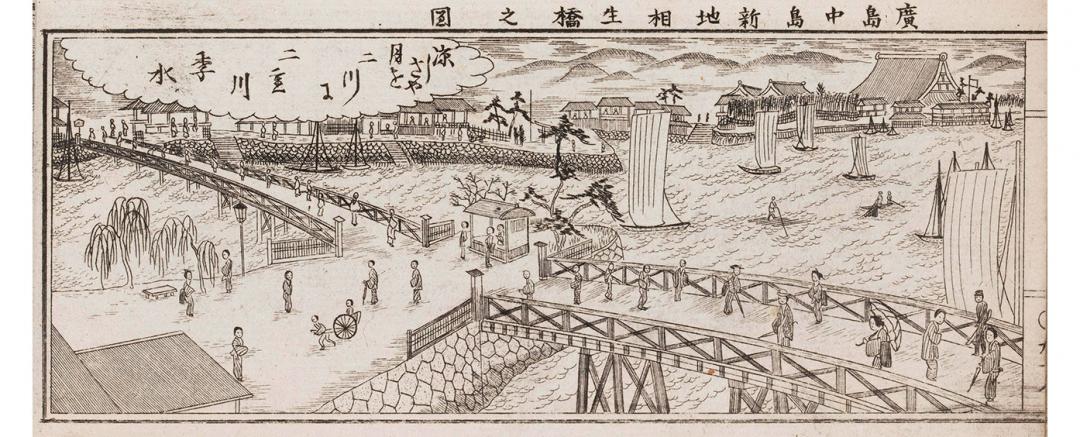
The Aioi-bashi Bridge during the Meiji Era (from the Downtown Hiroshima City Shopping Guidebook) (Hiroshima Shoshō Shi-ire Kaimono Annai-ki)
From the Hiroshima City Museum of History and Traditional Crafts Collection
A Center for Modern Culture and Thriving Commerce
With the dawn of the Meiji Era (1868-), people flocked to the Nakajima district and its streets, with a movie theater, deluxe Japanese-style inns for merchants from outside of Hiroshima, and modern cafes, in search of shopping and entertainment.
The Beginnings of City Government
In 1889, municipalization began, and the City of Hiroshima was born. Both Hiroshima City Hall and the Hiroshima City Council Chambers were built in the Nakajima district, which would remain the center of city administration until city hall and the council chambers were relocated in 1928.
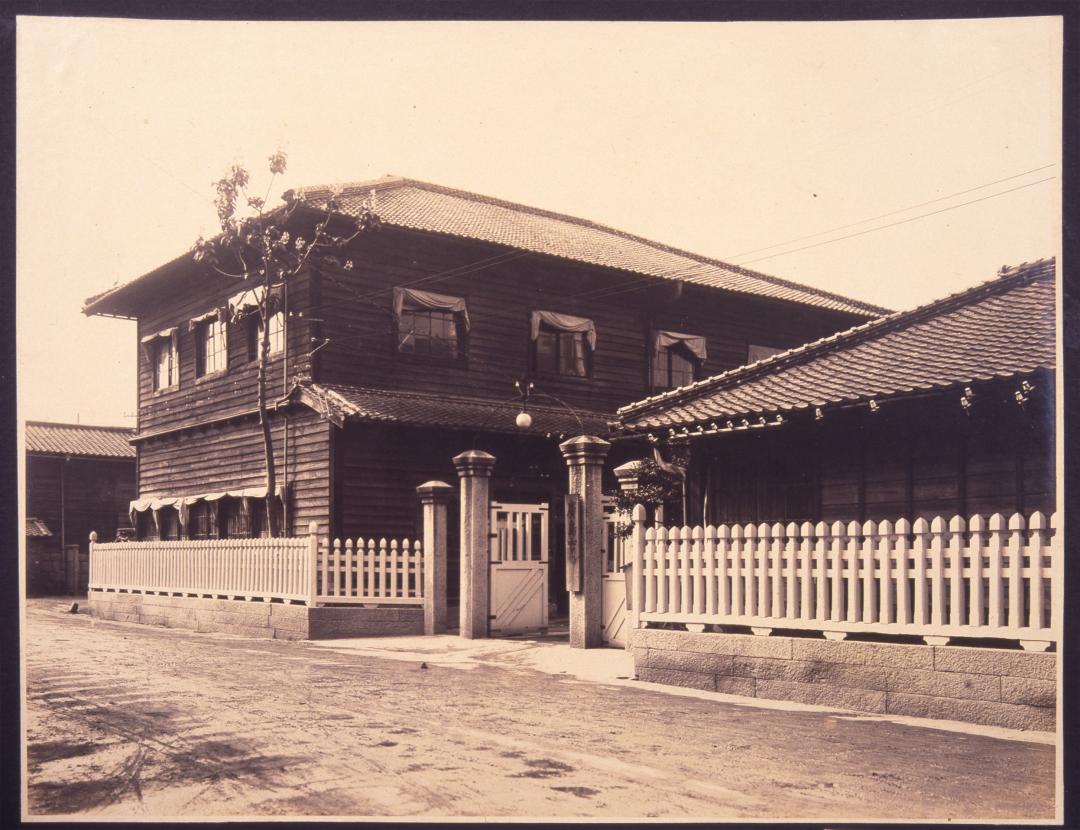
Former Hiroshima City Hall
From the Hiroshima City Municipal Archives Collection
Road Development
Eventually, with the development of railways and the introduction of automobiles, as well as the construction of a multitude of bridges to accommodate these new modes of transport, transportation via waterways slowly dissipated, bringing changes to the Nakajima district.
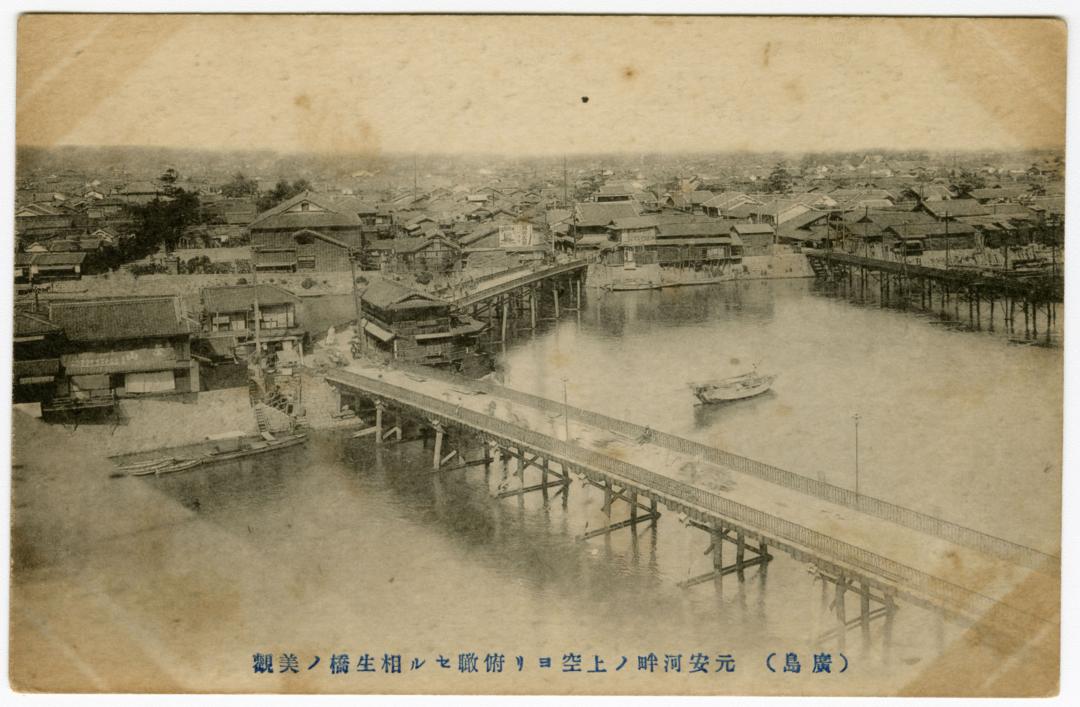
The former v-shaped wooden Aioi-bashi Bridge
From the Hiroshima City Municipal Archives Collection
When the era shifted, bringing with it a strengthened wartime government, Nakajima Hon-dori Street still remained a tranquil place where the sound of children playing in the backstreets echoed, and where modern culture, like films and western-style foods, thrived.
3.A Thriving Community: The Nakajima District Before the Bombing
4.The History of the Rest House

